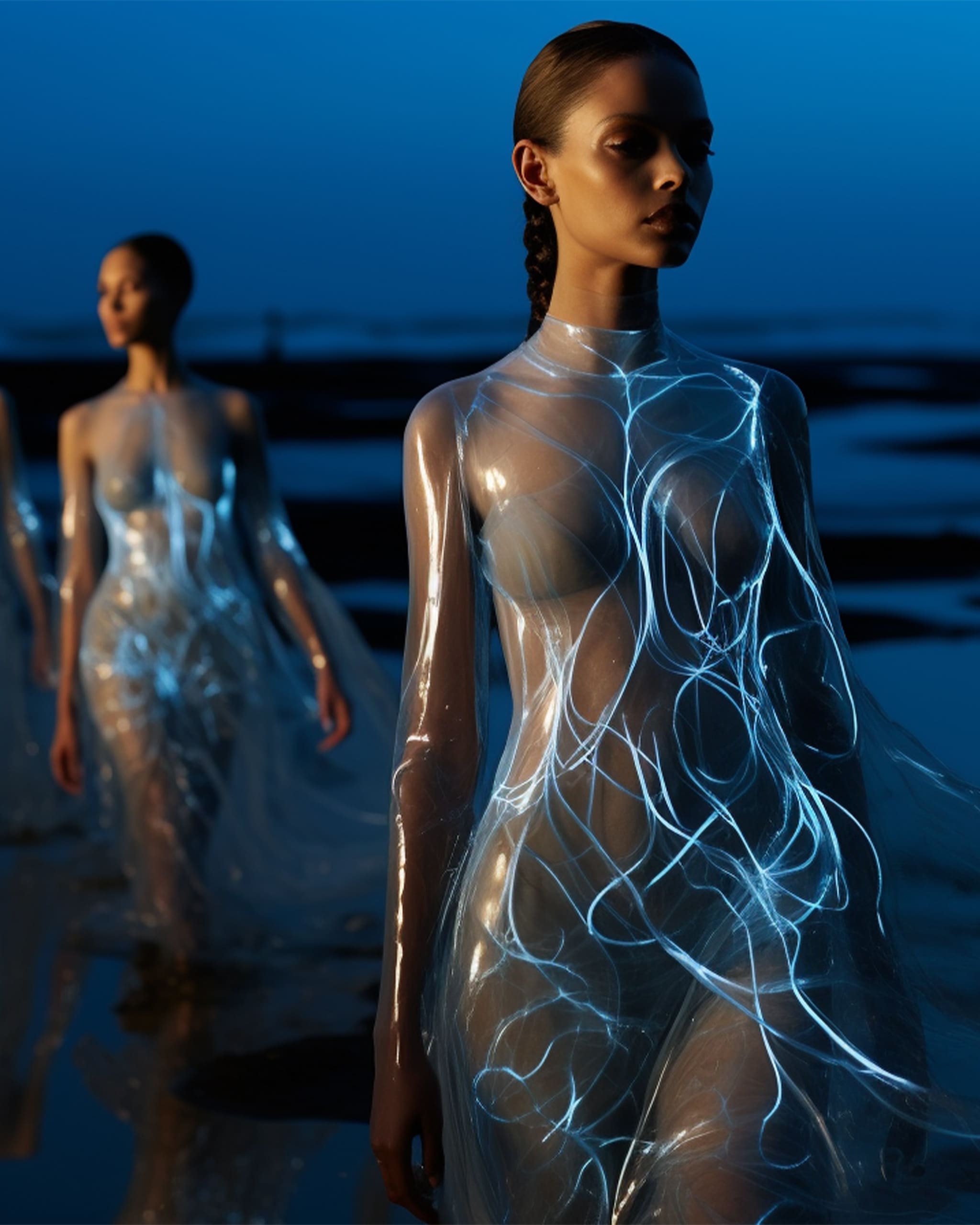Women wearing sheer, glowing gowns at a beach. AI photo by Vince Uy
The acclaimed creative created a “Imaginary Frontiers,” an AI-powered experience that lets us imagine what Philippine fashion could be, a thousand years into the future.

When asked about the future of Philippine fashion, what do you envision? For Vince Uy, there are three different possibilities.
The multi-awarded creative has dabbled in different artistic pursuits in his lifetime. Uy is known for his work as a creative director, illustrator, photographer, and even dipped his toes in drag at some point.
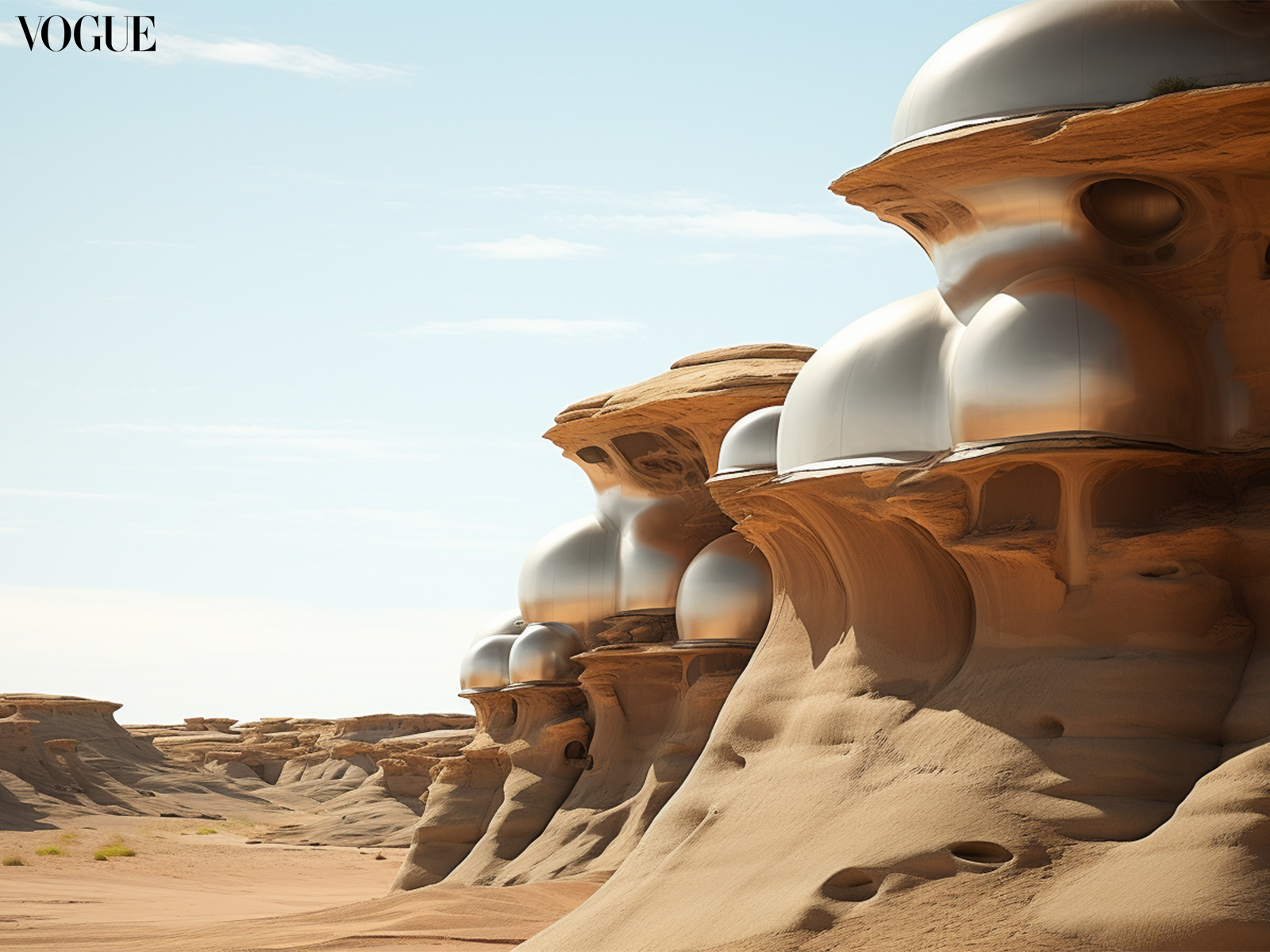
Since his early days in advertising, Uy has pushed the boundaries of what he could do and what his art could become. It’s apparent in everything that he touches, from the glossy pages of magazines to the design of his home. This constant pursuit and love for creative expression led him to explore a new medium: artificial intelligence (AI) art. “The things that excited me with AI are the endless possibilities of combining different things, taking inspirations from different eras, and combining them to form what my visions are, what my ideas are when it comes to creating editorials,” he says.
Creative Process

Making waves in the creative industry in recent years, AI technology is being used by the likes of artists, musicians, and writers to bring their ideas to fruition. In fashion, designers are also taking notice. The first-ever AI Fashion Week event took place from April 20 to 21, which opened doors for new talents to showcase their own “unreal” collections.
However, producing via AI is not entirely simplistic. To get his desired vision, Uy has had to do a lot of trial and error. In Midjourney, an AI image program by social platform Discord, he types in specific keywords to achieve the outcome that he wants. He adds detailed descriptors and adjectives, from the scenery, the model, the model’s clothes, and even the photography style. From these prompts, the AI suggests four different results, which are often far from being perfect on the first few tries. “It’s rare that you get 100 percent, how I like it in the first trial or a second try,” he says. “Usually, it’s prompting, re-prompting, a lot of tries to get it right.”
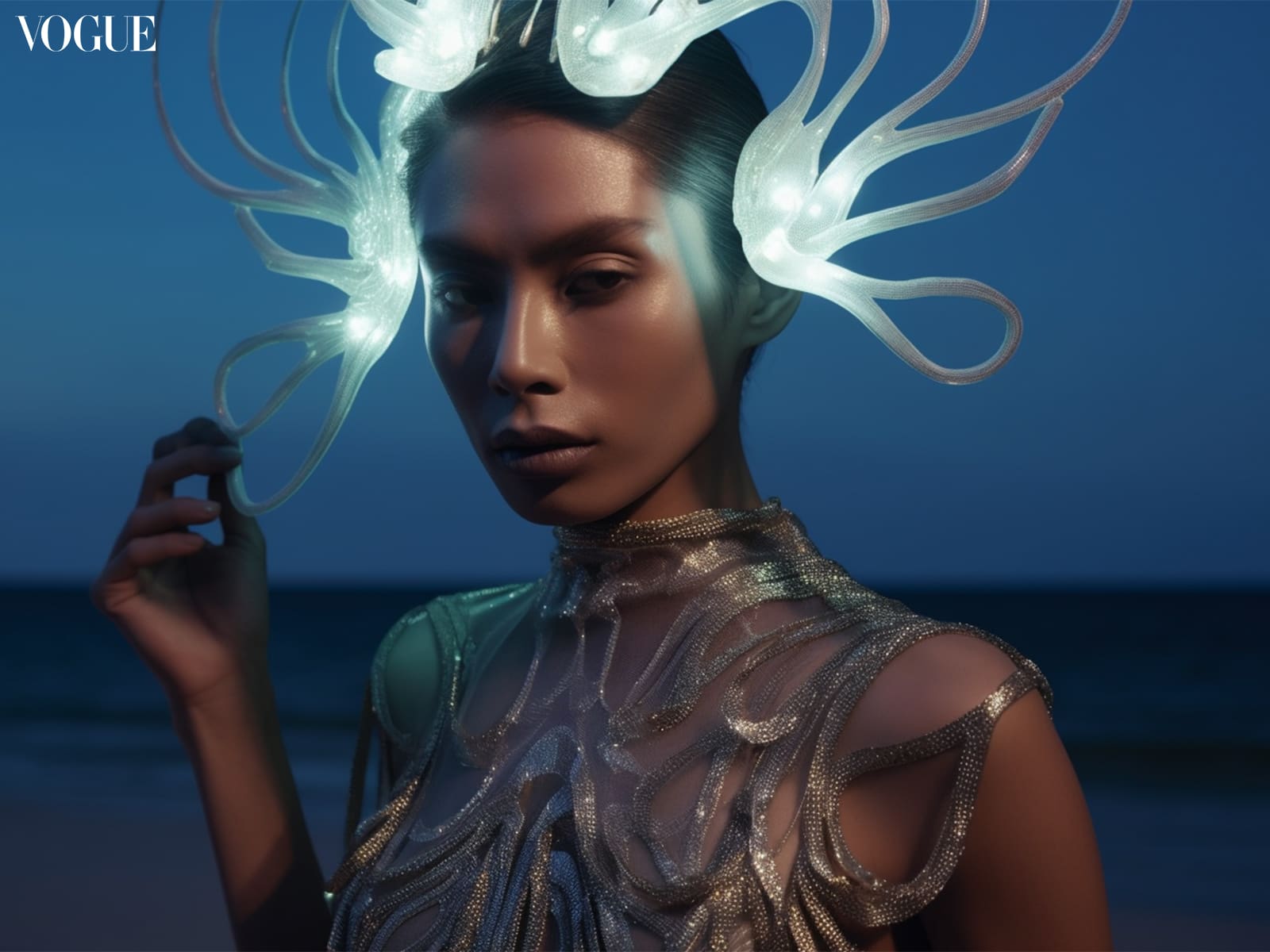
Still, Uy enjoys the process. He shares that it offers a “jumping point” for creatives to visualize their concepts, all without having to leave the comfort of their homes or the extensive planning that comes with physical shoots.
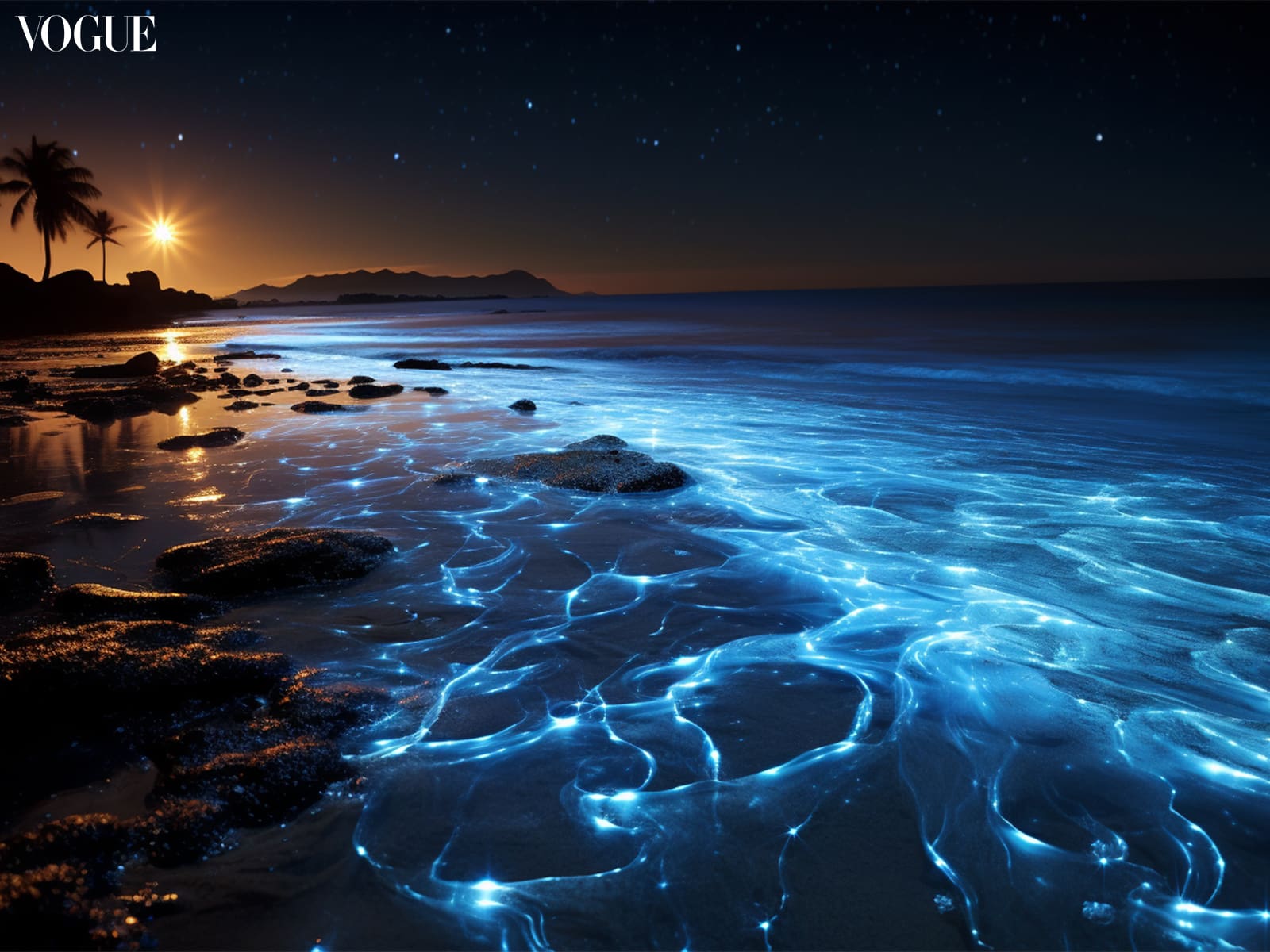
There is also the element of surprise. “The interesting thing about AI though, is that it can give you a point of view that’s so different, that something that you won’t expect,” he says. “I experience this when I’m rendering clothes. I would maybe take you know, different textures, I would prompt different textures and different inspirations. And I would be really surprised about how AI would render it.”
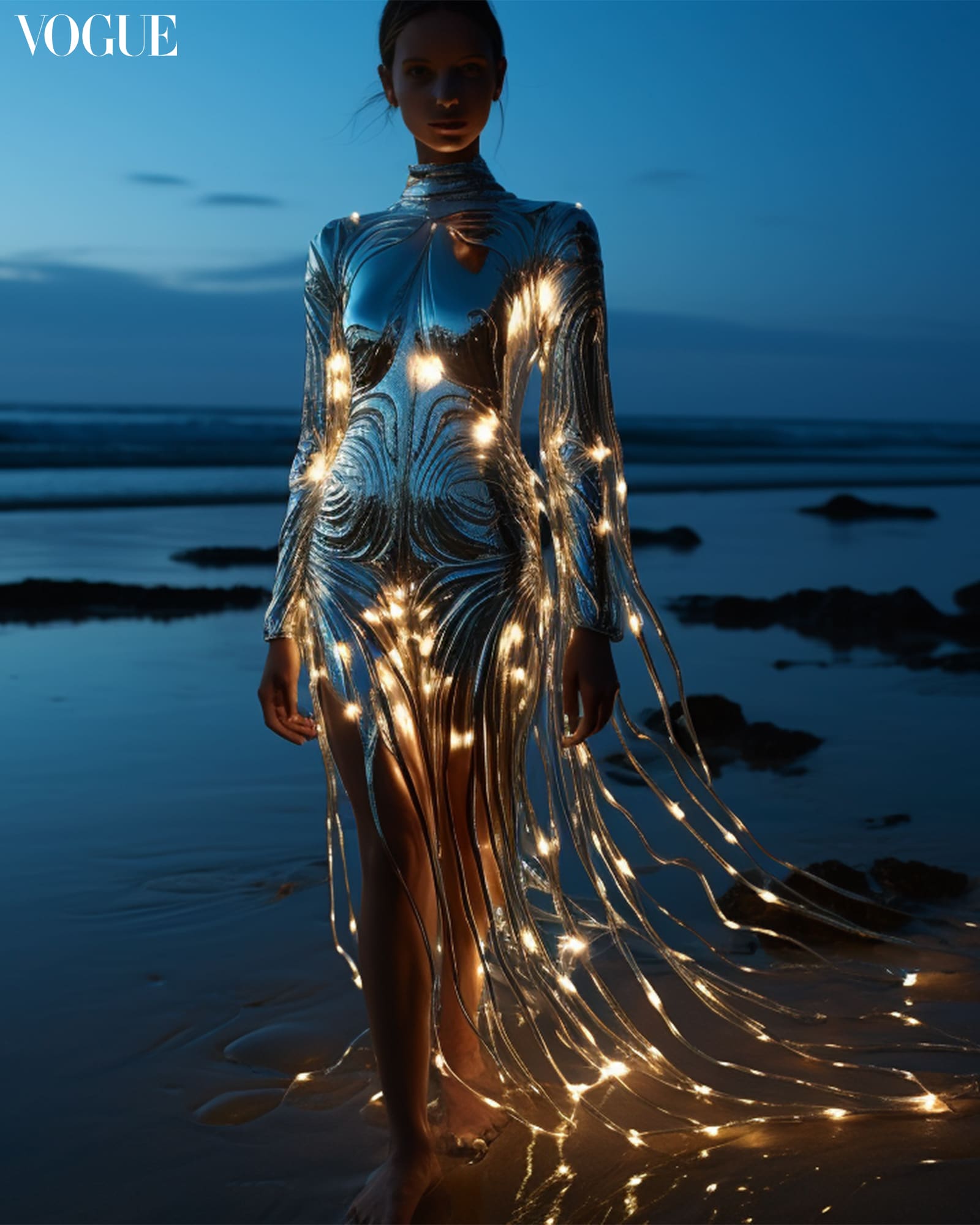
A New Frontier
In creating “Imaginary Frontiers,” Uy’s photo series for this year’s Vogue Philippines Anniversary Gala, he was inspired by the thought of what Philippine fashion would be like in a thousand years. It was divided into three chapters, with each one playing with a unique concept that integrates technology, art, and culture.
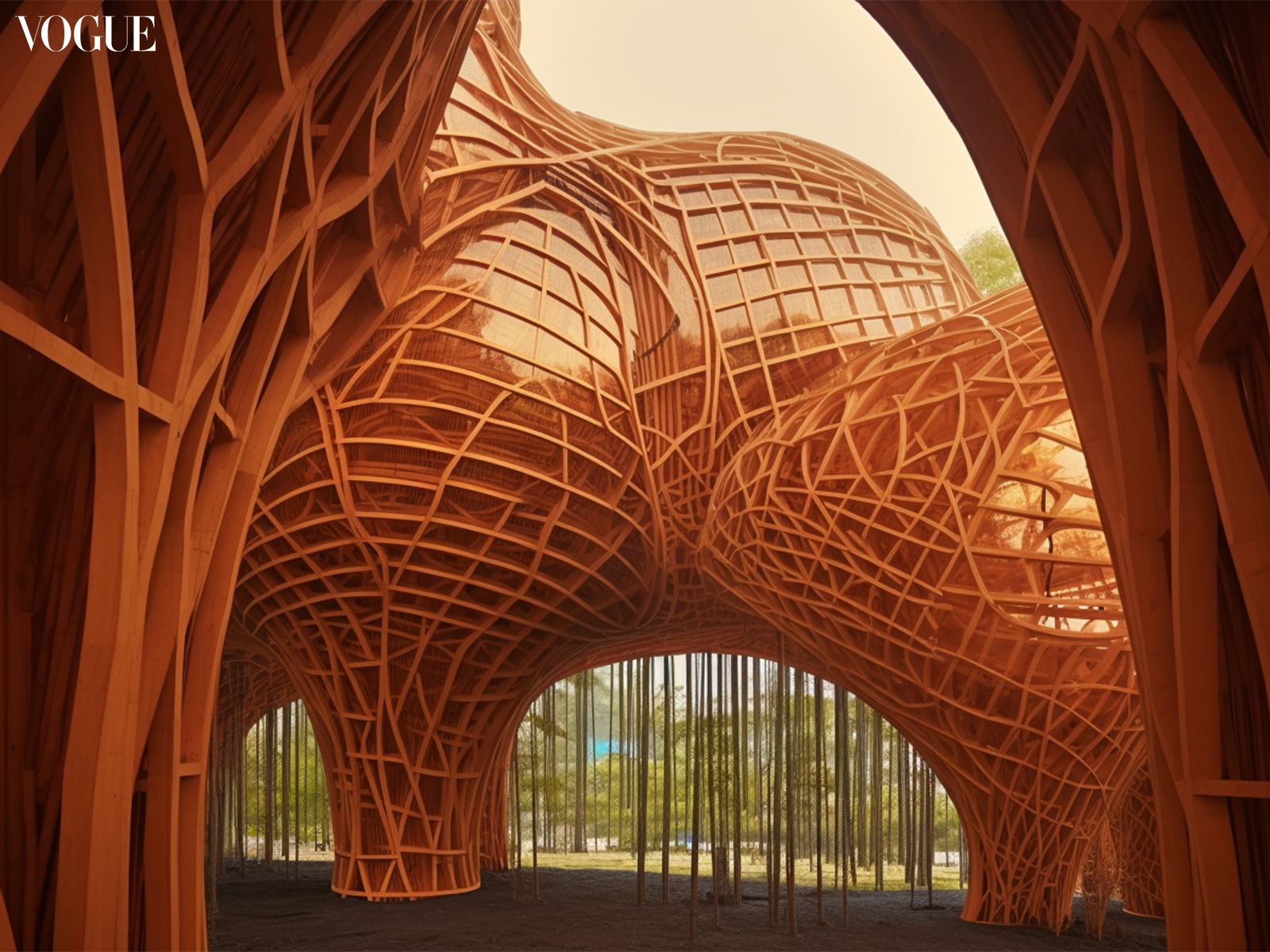
The first chapter, “Noctiluca,” is inspired by the idea of wearing living, breathing organisms. “There has been a lot of discussion about sustainability, and circular fashion,” he explains. “And I feel like the idea of, you know, what we will be wearing has its own life, would make us even more conscious about taking good care of what we wear. And it’s because it has life.”
Uy goes the opposite direction in the second chapter of his series, “Gaia,” and explores the idea of marrying Filipino culture, architecture, and technology. Here, he emphasizes the concept of future artistic and technological developments still driven by Philippine roots. “It’s looking forward, but then, in taking inspiration from everything from the past,” he says.
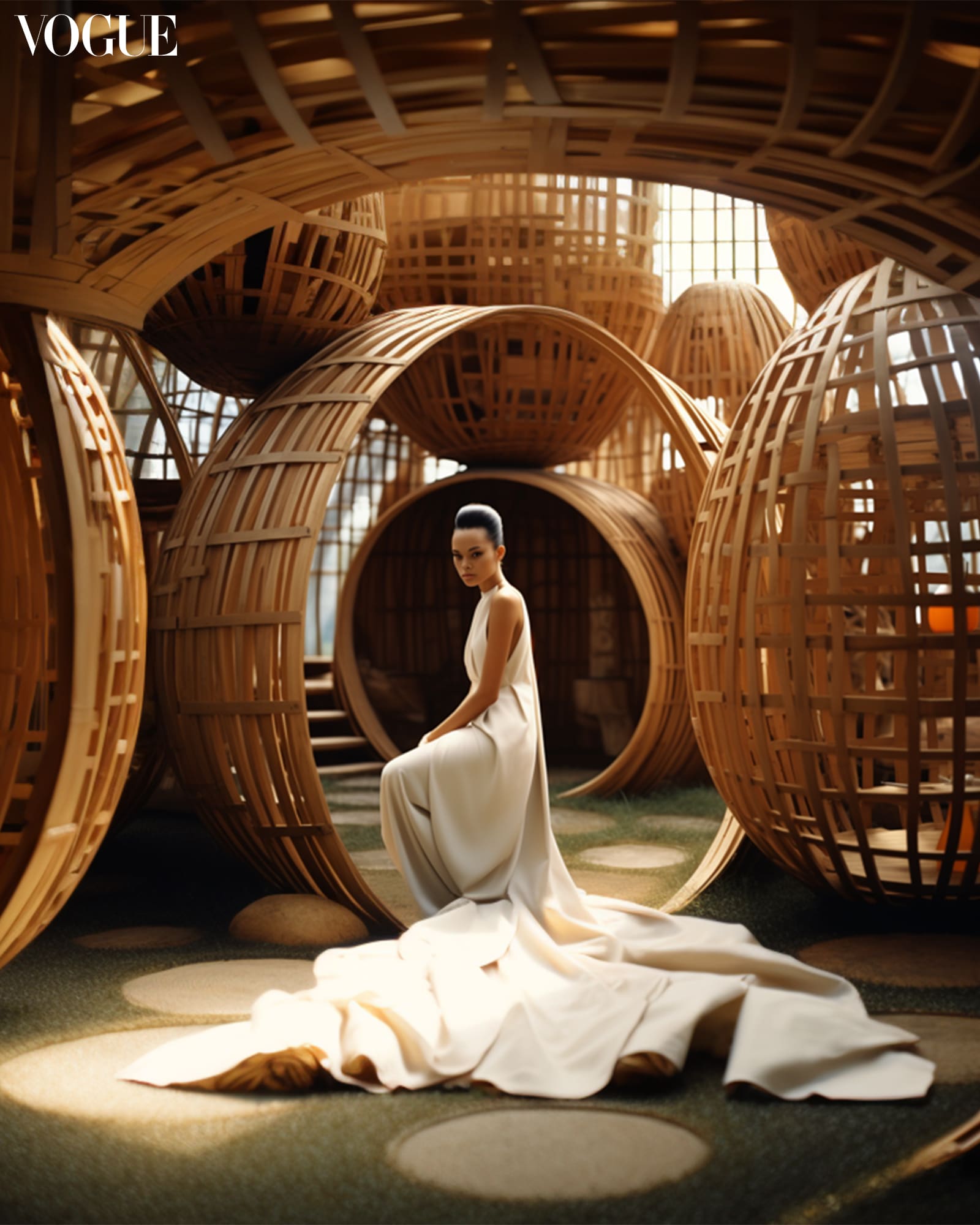
Taking inspiration from local architecture, the prominent structures in his photos appear to be made with natural materials such as rattan and bamboo. To give these a futuristic appearance, he gave these materials a bubble-like shape, similar to houses in the 1960s cartoon show The Jetsons. Inside these structures are models sporting clothes influenced by the mod fashion of that decade, with the fabric echoing the materials of the buildings.
The third chapter, “Armatura,” takes its audience even further. Set in a future when humans co-exist with beings from other planets, the chapter depicts models wearing ultramodern armor in a desert. “I imagined that in the future, as I mentioned, technology, which is really heavily part of our daily lives, is, it’s really ingrained in what we wear,” he explains. “I wanted the clothing to be very much representative of what we could find here, in the Philippines. The textures, the fabrics. So I sort of wanted to combine that with technology, and how we would look like.”
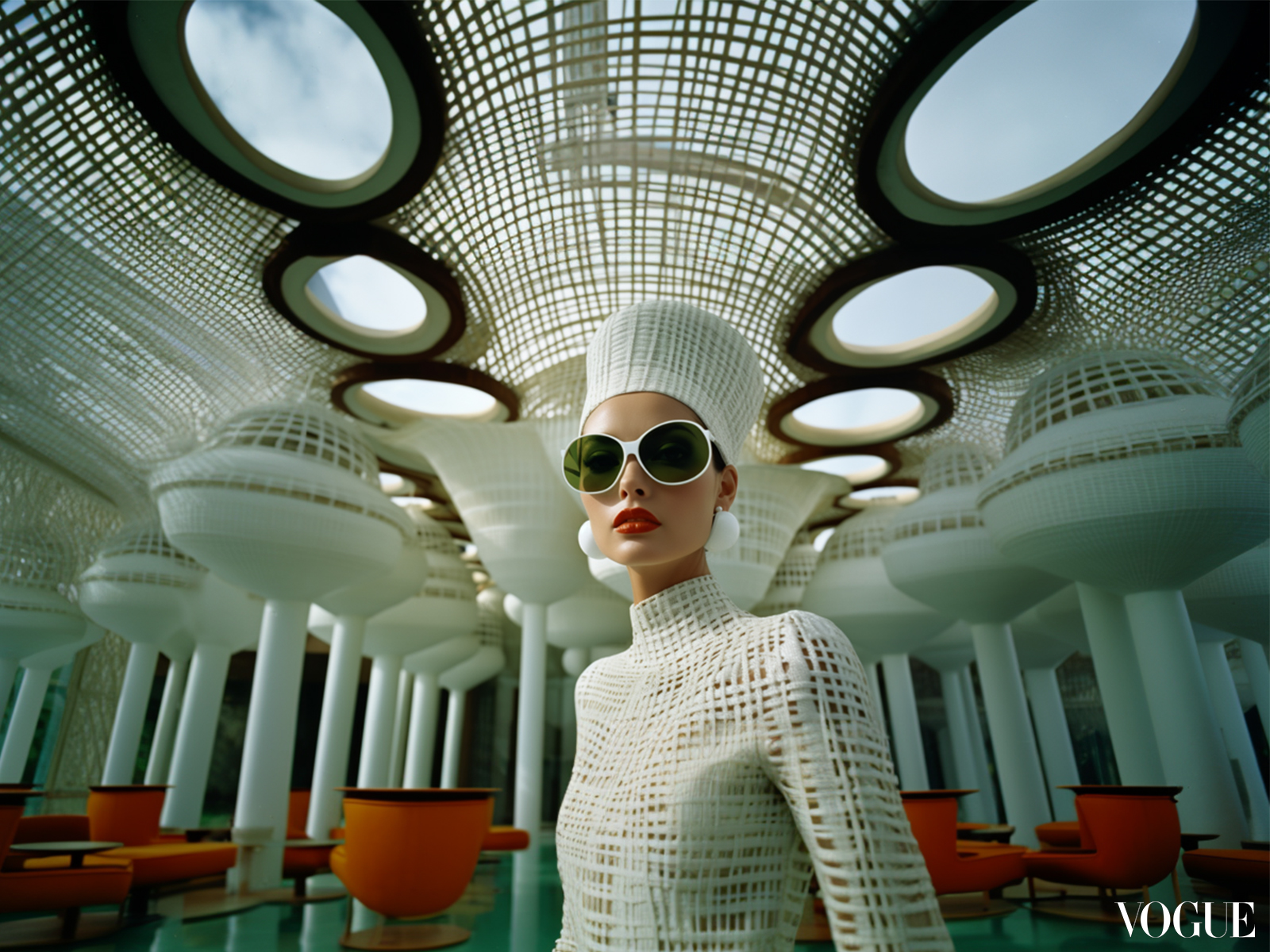
Climate change also played a big part in choosing the setting for “Armatura.”
“I was inspired by the Kapurpurawan rock formations in Ilocos,” he says. “So I would imagine that our landscape would totally be, you know, I guess, with climate change and all, we would have a lot of rock formations, we would possibly be living in the desert.” Uy wanted the images to feel hot and cold at the same time, reflecting the possible extreme weather conditions in the future and how fashion will adapt to them.
As exciting as AI technology is, he expresses that it doesn’t compare to physical shoots. “It’s still different when you are there. When I’m there to shoot, when you get to really convey the emotions that you want, when you get to have the model pose in a certain way, how you would want it,“ he says. The collaboration process with other creatives, face-to-face interactions, and spontaneous moments are the key differences between the two mediums for the distinguished creative. “I would say, ‘This lighting looks really good’, ‘’Now, maybe that’s terrible’, ‘That’s shiny out here’, or ‘This spot looks great!’ So those spontaneous moments, I think, are the ones that, you know, are very significantly different from when you’re doing AI,” he says.
This doesn’t take away from the magic of AI art. When guests step into the cube-shaped portal of the Imaginary Frontiers installation, they are brought into a world of fashion that feels both familiar and new. This year’s Vogue Philippines Anniversary Gala places an emphasis on the connections between identity and culture, heritage and modernity. Vince Uy’s photo series certainly fits right in, embracing Filipino culture with the endless possibilities of the future.
